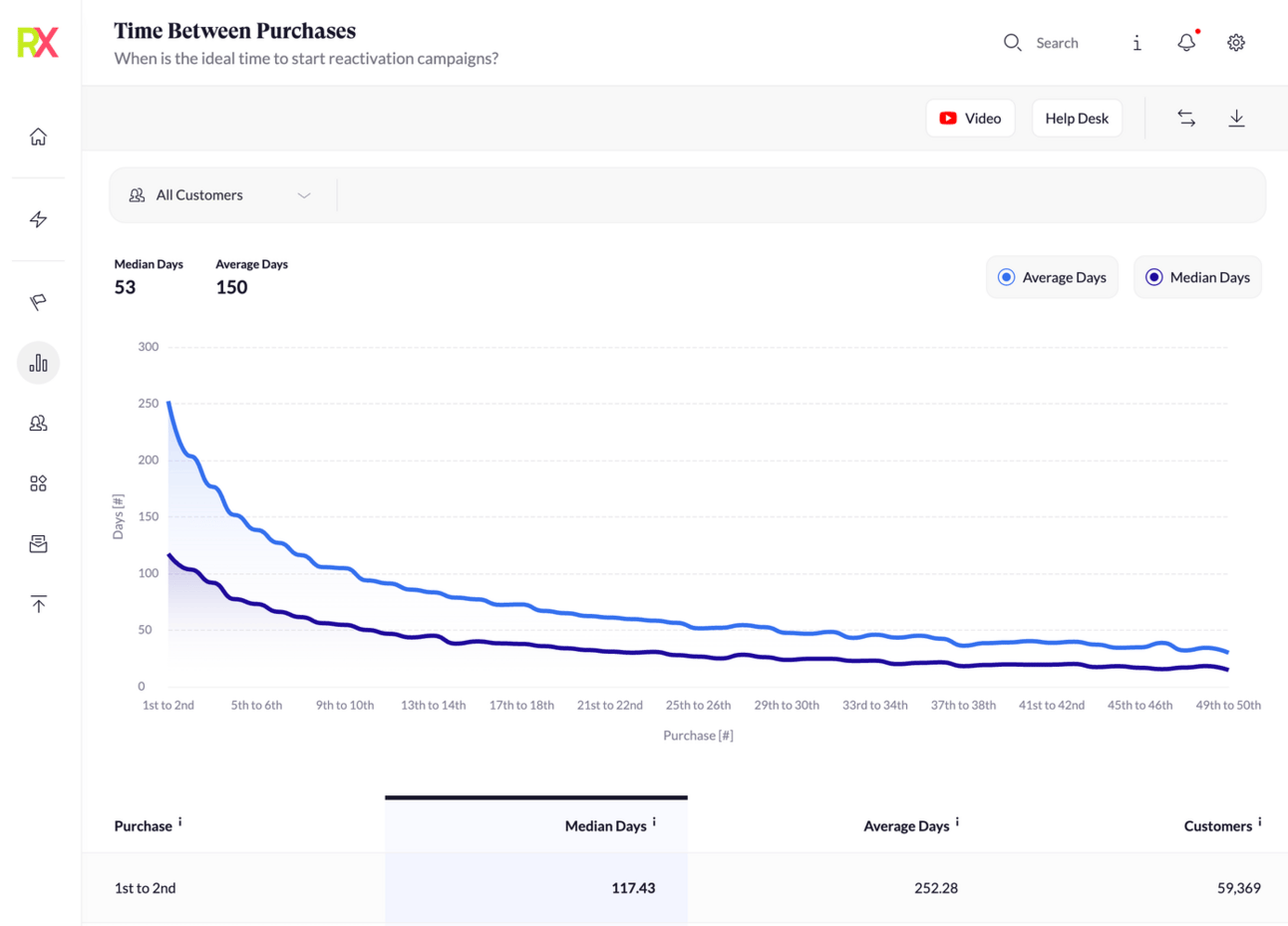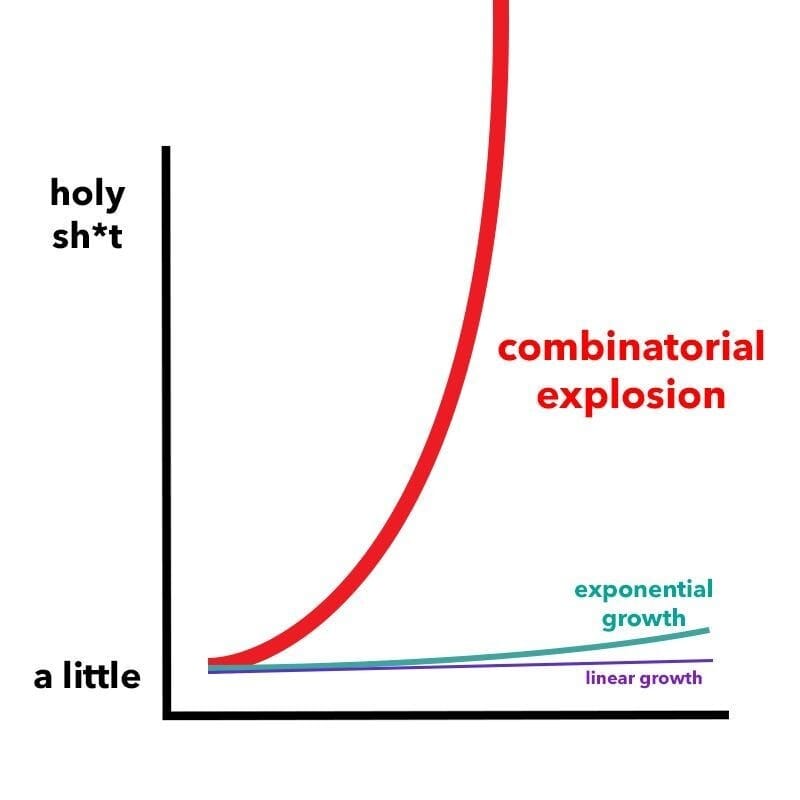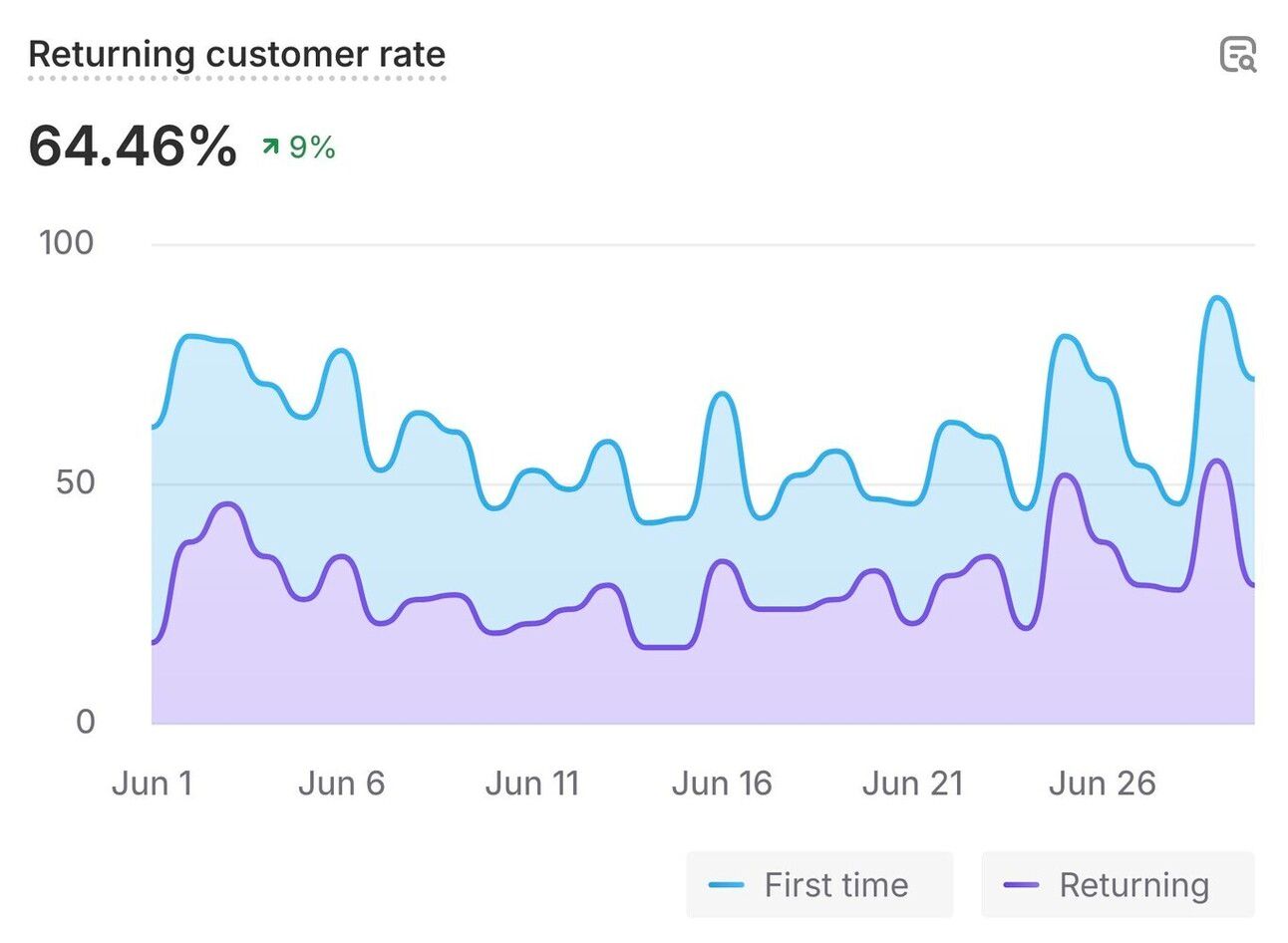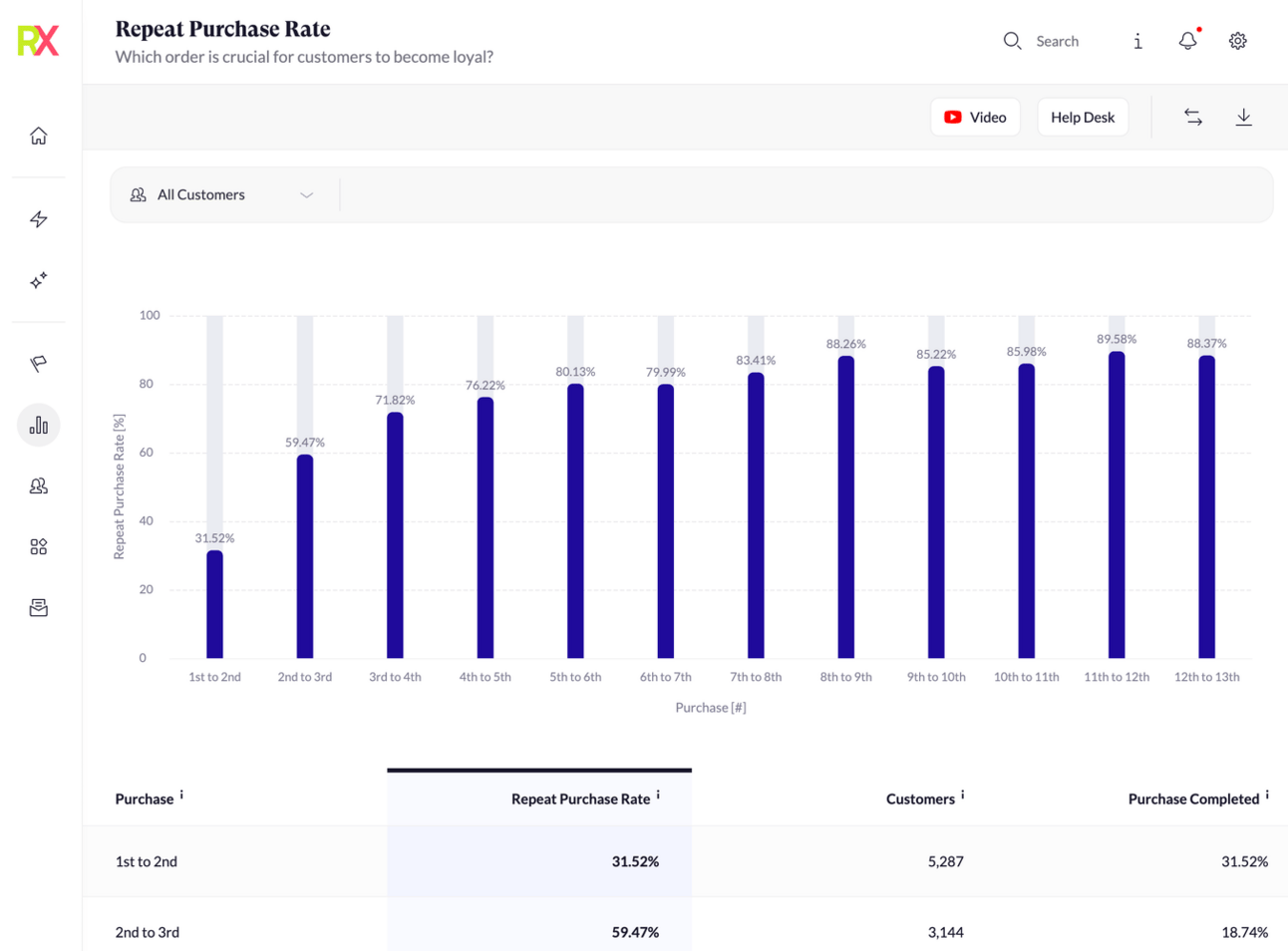Today, I'm revealing how focusing on your repeat purchase rate can exponentially boost your eCommerce brand's profitability—by shortening order intervals, increasing average order value, and reducing return rates.
Shorter intervals between orders
The more orders a customer places, the shorter the time between orders. This acceleration leads to a higher frequency of orders and more orders per calendar year.

RetentionX: Time Between Purchases
Limited drops can be a great way to further disrupt your customers' usual ordering cycle. Limited drops are a set of products that are only available for a limited time and in a limited quantity.
Here is a checklist for creating a powerful drop strategy:
The marketing communication of the drop should start close to the drop so that the customer cannot plan the purchase.
The drop should be based on your experience of category cross-sells.Create drops based on the categories that sell the most in combination with your top-selling category.
The price point of the products in the drop must be very attractive and in line with the average spend of your customers.
Don't try to upsell with drops.
Don't put items in drops that will replace the next organic order.
Higher Average Order Value (AOV)
Orders from existing customers have an average 20% higher AOV than orders from new customers. This effect increases with each subsequent order. The biggest jump is between order 1 and 2.
This is because initial purchases are often a trial run for customers to get to know your brand. This makes it even more important to exceed expectations. From service to product quality to processes.
Subsequent orders tend to have more products per basket and higher average product values that lead to the 20% increase of AOV.
This also means that if your AOV drops one day, first check the percentage of existing customers on that day.
Exponential repeat orders
The probability of a 3rd order is on average 60% higher than a 2nd order, and this effect can also be observed with follow-up orders. A 4th order is 30% more likely than a 3rd order. And so on...
Lower return and cancellation rates
Orders from existing customers have 40% lower return and cancellation rates. This translates into more profit per order.
Lower marketing investment
Acquiring a new customer is 7 times more expensive than retaining an existing customer.
Working on better customer retention leads to a combinatorial explosion with incremental impact on your brand's profit and growth.

You get more orders in less time with higher basket values. On average, one retained customer generates the profit of 4 new customers due to the combined exponential effects mentioned above.
By the way, the fastest growing DTC brands generate 80%+ of their revenue from their existing customer base. New customer acquisition only fuels the existing customer machine.
Addon: Don't trust Shopify's returning customer rate
If your brand's repurchase rate is 70%, it's quite possible that 70% of your customers only buy from you once! 🤯

Sounds contradictory?
The returning customer rate (or repurchase rate) metric only tells you how many of the orders in a period came from new customers and how many came from existing customers.
However, it completely ignores the fact that the likelihood of a repeat order continues to increase:
The probability of a follow-up order is more likely to be as follows
1 → 2 order: 30%
2 → 3 order: 60%
3 → 4 order: 70%
4 → 5 order: 80%....
This means that the more history you have, the higher your repeat rate will automatically be.
A small percentage of very loyal customers will push the monthly percentage of repeat orders higher and higher.
So you think your repeat rate is improving, but it's not. – Well, you don't actually know, which is even worse!
In such an example, you could have a repeat customer rate of 70% and at the same time lose 70% of your customers after the first purchase.
And this is not an isolated case. It is the reality for most brands.
That's why it's so important to look at the repeat purchase rate for each step of the purchase journey.

RetentionX: Repeat Purchase Rate
Understanding which step in the customer journey is critical to long-term retention is essential.
Insight: Customers with a 50% higher average order value (AOV) on their first purchase make twice as many purchases over their lifetime.
This has exponential growth potential!
You get more purchases for higher values.
Each of these customers is worth up to 5x more than the average customer.
DO THIS:
Identify High AOV Segments: Identify customers who spend more than average on their first purchase. Analyze their demographics, what products they buy, which marketing channels & campaigns they came from, and what led to the high first purchase.
Adjust Customer Acquisition: Feed your findings back into your marketing strategy:
→ Leverage products that drive high AOVs for your customer acquisition
→ Target budgets to channels that attract this ideal customer profile.
→ Create customer segments in tools like RetentionX and push them back to your meta campaigns as audiences that can be used as signals. This will tell Meta what kind of customers you are looking for.
Boost AOV Strategies: Implement tactics such as upselling, cross-selling, and bundling to increase AOV. (I have several posts on this topic - check out my timeline)
TIP: I know that’s a lot to take in! I’ve been in the same position—feeling overwhelmed about where to find the data, how to get started, and how to embed an LTV-driven mindset into my teams. That’s why we built RetentionX. As a brand operator, it has been my #1 internal tool to turn things around before launching it as publicly available software.
That’s it for this week!










